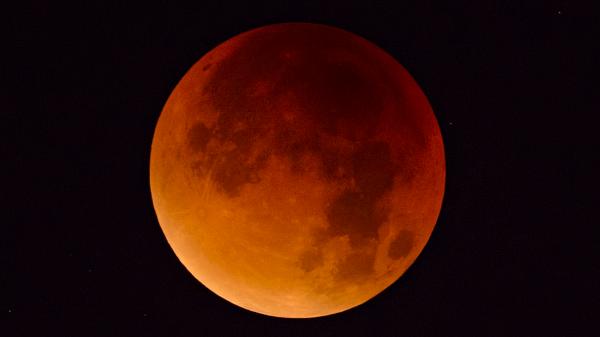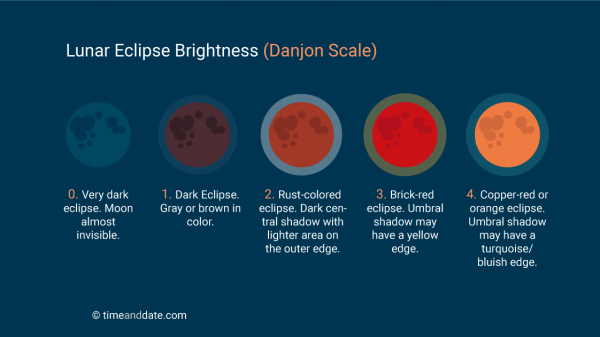Why Does the Moon Turn Red?
During a total lunar eclipse, the Moon usually turns a shade of red or orange. Why is that?

A totally eclipsed Moon can take on a reddish glow.
©iStockphoto.com/Sjo
Earth Casts Its Shadow
The Moon does not have any light of its own—it shines because its surface reflects sunlight. During a total lunar eclipse, the Earth moves between the Sun and the Moon and cuts off the Moon's light supply. When this happens, the surface of the Moon takes on a reddish glow instead of going completely dark.
The red color of a totally eclipsed Moon has prompted many people in recent years to refer to total lunar eclipses as Blood Moons.
Why Red?
The reason why the Moon takes on a reddish color during totality is a phenomenon called Rayleigh scattering. It is the same mechanism responsible for causing colorful sunrises and sunsets, and for the sky to look blue.
Colorful Sunlight
Even though sunlight may look white to human eyes, it is actually composed of different colors. These colors are visible through a prism or in a rainbow. Colors towards the red part of the spectrum have longer wavelengths and lower frequencies compared to colors towards the violet part of the spectrum which have shorter wavelengths and higher frequencies.
The science of total lunar eclipses
Earth's Atmosphere
The next piece of the puzzle of why a totally eclipsed Moon turns red is the Earth's atmosphere. The layer of air surrounding our planet is made up of different gases, water droplets, and dust particles.
When sunlight entering the Earth's atmosphere strikes the particles that are smaller than the light's wavelengths, it gets scattered into different directions. Not all colors in the light spectrum, however, are equally scattered. Colors with shorter wavelengths, especially the violet and blue colors, are scattered more strongly, so they are removed from the sunlight before it hits the surface of the Moon during a lunar eclipse. Those with longer wavelengths, like red and orange, pass through the atmosphere. This red-orange light is then bent or refracted around Earth, hitting the surface of the Moon and giving it the reddish-orange glow that total lunar eclipses are famous for.

Light blue band visible on the Moon's surface.
©bigstockphoto.com/Medardus
Look for a Blue Band
Veteran eclipse watchers will tell you that if you look really hard right at the beginning and just before the end of totality, you may detect a light blue or turquoise band on the Moon's face (see image). This happens because the Earth's ozone layer scatters red light and lets through some of the blue light that is otherwise filtered out by other layers of the atmosphere.
Many Shades of Red
The Moon can take on different shades of red, orange, or gold during a total lunar eclipse, depending on the conditions of the Earth's atmosphere at the time of the eclipse. The amount of dust particles, water droplets, clouds, and mist can all have an effect on the shade of red. Volcanic ash and dust in the atmosphere can also lead to the Moon turning dark during an eclipse.
Fun fact: If you were lucky enough to see a total lunar eclipse from the Moon, you'd see a red ring around the Earth. In effect, you'd be seeing all the sunrises and sunsets taking place at that specific moment on Earth!
Sunrise and sunset times in your city

The Danjon Scale was created by French astronomer, André-Louis Danjon.
Brightness Scale
Scientists measure the appearance and brightness of a total lunar eclipse using a five-point scale—ranging from 0 to 4—called the Danjon Scale (see image). A lunar eclipse is ranked and assigned a value on the scale at the time of mid-totality.
Eclipse direction depends on your location




